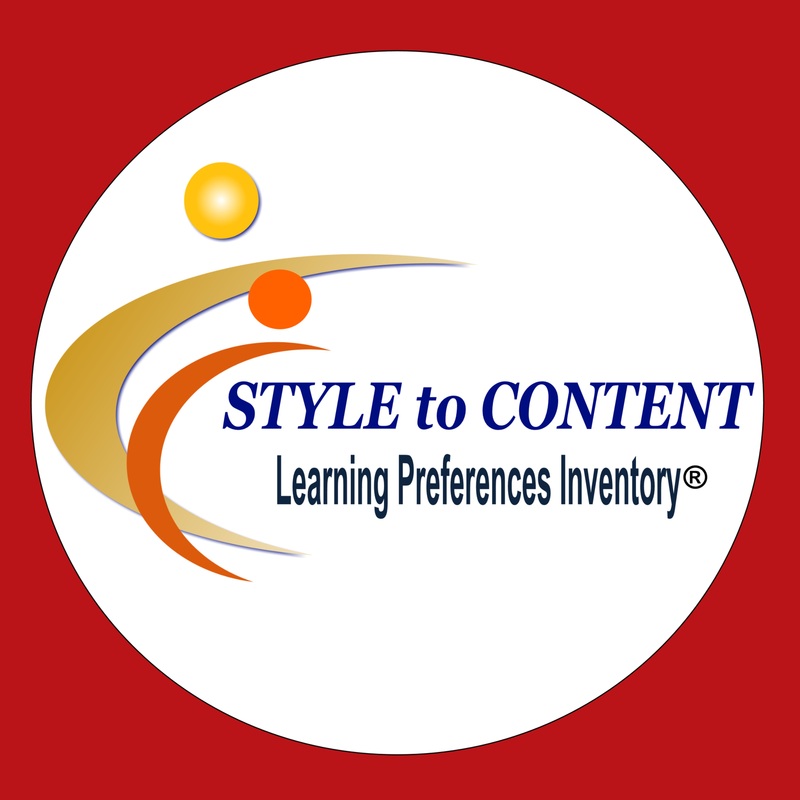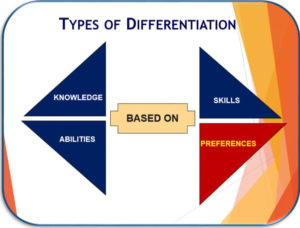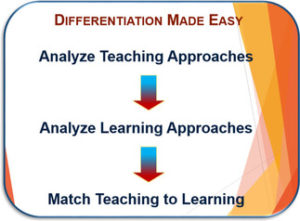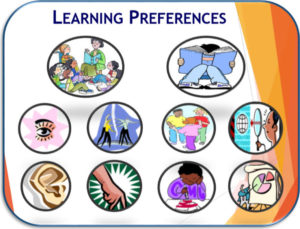The Style to Content Learning Preferences Inventory is a research-based, online program that considers 10 key learning preferences. The program begins with the preferences inventory, which is comparable to a learning styles survey. When completed, the inventory provides useful insight into ways students prefer to learn and serves as a worthwhile complement to teacher observation of students in the classroom. Students’ learning preferences are fluid and change over time. Just as students are expected to accumulate more knowledge and skills, they should also be expanding their approaches to learning. Children come to schools from many cultures and experiences with varied attitudes about learning. With the growing diversity among student populations, more attention must be given to diversifying curriculum and instruction. Style to Content helps fulfill that purpose.
STYLE TO CONTENT OVERVIEW

Notable among student differences are the approaches by which they prefer to learn. For example, some students are more inclined to be visual or auditory learners; some students prefer to work more independently than others. It is increasingly important that educators take students’ backgrounds into consideration in developing instructional programs that best meet students’ needs. Teachers can accomplish this by structuring lesson activities that first meet students’ demonstrated preferences and then transitioning into other preferences. Teachers may also construct lessons that feature activities that include multiple preferences and then utilize grouping and individualization to address varied students’ learning modes.
Today there is so much focus on the WHAT students learn. Just as important, and often overlooked, is the HOW students learn. The Style to Content Learning Preferences Inventory provides a convenient tool to teachers to meet students where they are and adjust instruction to expand ways students learn in the future.

Style to Content Learning Preferences Inventory provides a convenient means of identifying and documenting student growth in expanding their approaches to learning during their secondary education years. Students and teachers both have log-in portals with information also available to parents. The program, which is intended primarily for grades 5 through 12, is based on 10 recognized preferences (or learning modalities) exhibited by students: Field Independent, Field Dependent, Visual, Auditory, Kinesthetic, Tactile, Active, Reflective, Global, Sequential. In addition to reports for individual students, with Style to Content, students’ preferences can also be gauged at the class, school, region, or entire district level.



BENEFITS TO TEACHERS:
- Helps teachers increase their repertoire of teaching techniques and methodologies – for imparting knowledge and skills.
- Helps teachers enhance instructional practices.
- Provides teachers insight into teaching techniques.
- Expands teachers’ teaching preferences.
- Helps teachers with lesson planning and arranging classroom.
- Helps teachers individualize and group instruction.
- Helps address students’ cultures and backgrounds.
- Helps teachers in structuring and sequencing content.
- Enables teachers to better meet the learning needs of all students.
BENEFITS FOR STUDENTS:
- Helps students increase their repertoire of learning preferences and techniques – for obtaining knowledge and skills.
- Helps students enhance ability to build on strengths.
- Provides students a foundation to expand approaches to learning.
- Helps students establish more meaningful connection with instruction.
- Provides students increased insight into how they learn.
- Helps student increase academic achievement.
STUDENT EXPERIENCE
-
- Students have access to the Inventory through their assigned log-ons. The web based version of the program is simple to use. It consists of 100 items and can be completed in 15 to 20 minutes. It creates all necessary documents including the graph, class profile sheets, student profiles, and scoring sheets.
-
- Over the years, the program will store student learning preference data for grades 5,7,9,11.
-
- The program makes preference information for students who transfer to other classes or schools readily available to teachers.
-
- Students are able to follow how their approaches to learning expand over time.

THE TEACHER EXPERIENCE

- Teachers have instant access to preference information for the students that are assigned to them.
- Teacher enrollment and courses automatically included in automatically in the program, or teachers can build custom lists.
- Teachers can chart their learning preferences which impact their teaching styles.
- Teachers receive in-depth profiles for individual students as well as groups.
THE SCHOOL OR DISTRICT EXPERIENCE
Schools and districts can identify patterns of learning preferences at individual student, class, school or entire district levels and use that information to enhance curriculum development and instructional practices.

